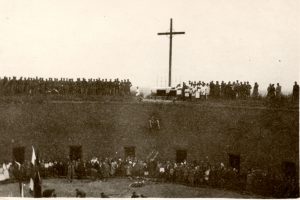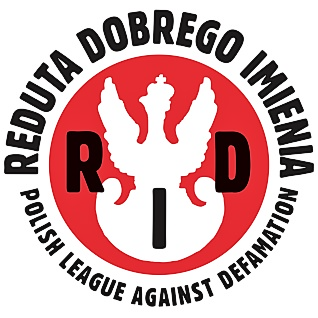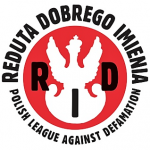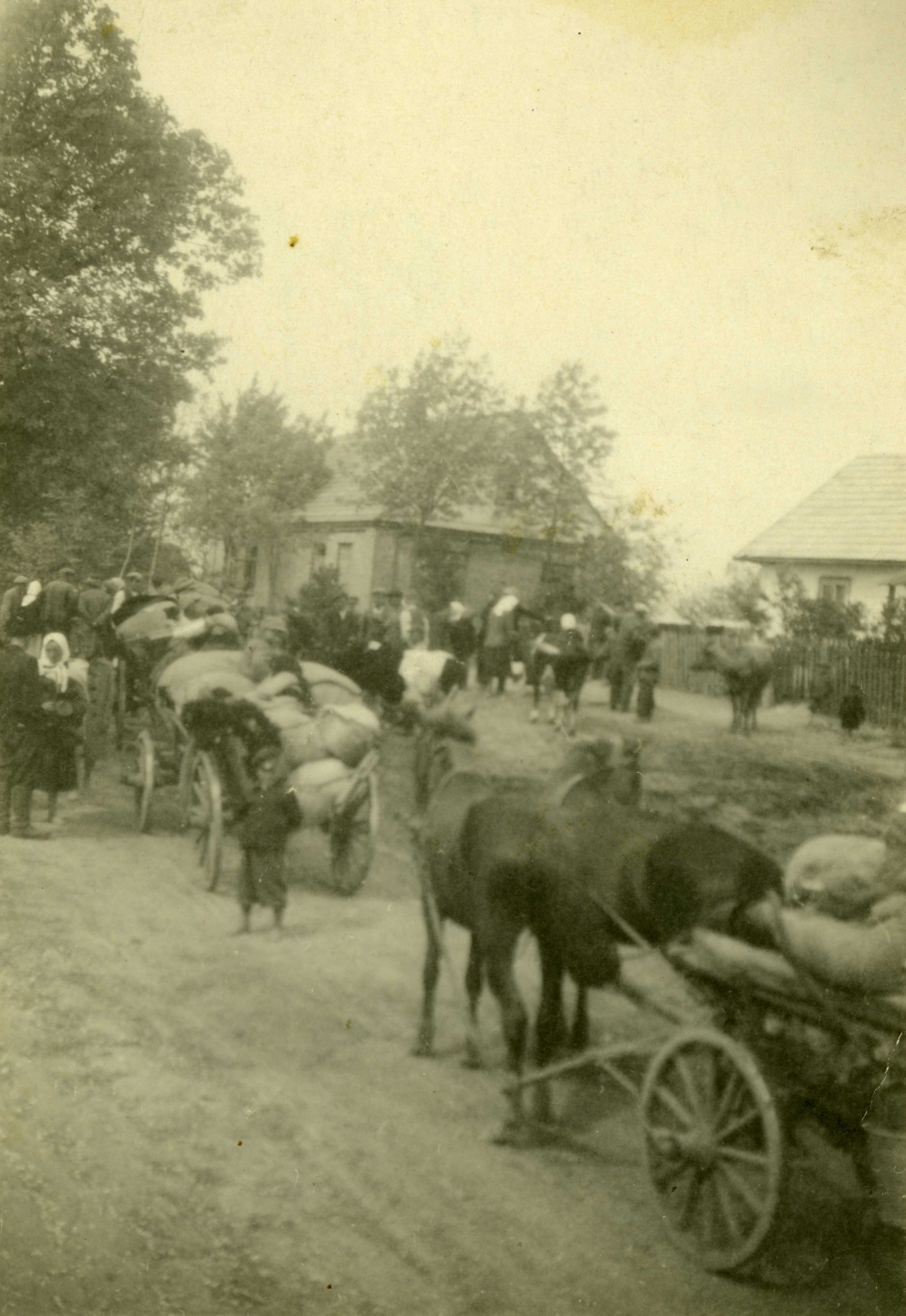Presentation of research results - calculation methodology

The photos come from the resources of the State Archives in Zamosc.
The project shows the damage caused during the Second World War, and the data obtained shows values from 1939-1945. However, in order to make the data readable and to place them in the contemporary world, we have converted these values into current values to show the true scale of the drama and clear values which can be claimed by Polish citizens whose families, from the Zamość district, suffered harm during that time.
In this context, we provide you with the methodology, prepared by Professor Mirosław Kłusek, PhD, an employee of the Department of History of Economics at the Faculty of Economics and Sociology of the University of Łódź, for the valorisation into present values of the individual damage suffered by Polish citizens of the Zamość poviat during the German aggression and occupation during World War II, 1939-1945. At the same time, in the content of the project we present to you, we have already applied calculations and present data, valorised for the year 2023.
Due to the lack of official official conversion rates from pre-war zloty to current circulation zloty, it was necessary to develop a method of converting the value of wartime losses of Zamość county residents incurred during the German aggression and occupation during World War II 1939-1945, expressed in pre-war (August 1939) zloty into contemporary value. When looking for an answer as to what the real value of these losses is today, we must certainly exclude their nominal value, due to the exchange of money in 1950 in the ratio of 100 old zlotys for 1 new zloty and the denomination carried out in 1995. 1:10 000.
The first full attempt to valorise the pre-war zloty at its contemporary value was made by Paweł Pońsko and Mirosław Kłusek.1They note "that determining the relative change in value of an amount of money between two different moments, i.e. between a base year and a reference year, is not a straightforward question. There is no Single 'correct' economic measure of historical value, and economists use different indicators depending on the context of the question, often giving variants of possible valorisations.". 2.
The authors proposed several ways to valorise the value of war losses expressed in pre-war gold, based on historical data and publicly available indices showing changes in value over time:
- 1. Price index adjustment. It answers the question of how much a consumer good would be worth today if it had been purchased for a given amount in 1939 zloty. Here the correct conversion factor would be the Consumer Price Index (CPI). Unfortunately, we have a discontinuity of the Polish currency before and after the Second World War, as the Polish zloty before the war was never correctly valorised into the post-war zloty. The authors have therefore relied here on the US dollar (USD), as the price index for this currency has been known continuously since before the Second World War. Dollar valorisation involves measuring the historical value by inflation of the US dollar, taking into account the exchange rate of the Polish zloty to the dollar. It is a measure of the change over time of the real purchasing power of the zloty.3.
- Valorisation with goldIn this case, the valorisation of war losses, expressed in 1939 gold by means of gold parity, is a valorisation by means of an investment or investment of capital. In simplified terms, it answers the question of what the value of the war loss would be today if gold had been bought for its value in 1939 and retained until today.4.
- Valorisation at the expense of maintenance5It is a valorisation of "a sum describing the value of consumption in contemporary realities, taking into account the economic cost, i.e. the opportunity cost of consumption".6, which takes into account the change in the consumption basket caused by economic growth. In this method, the valorisation of war losses would be measured by the relative cost of services and goods, such as clothing, food, housing, etc., purchased by members of the average household. "In the context of the valorisation of the pre-war zloty, this method measures the weight of the expenditure of one zloty, relative to the total consumption of the average person in 1939, indicating how many today's zloty have to be spent in order to purchase a similarly important (as in 1939) part of the total consumption available to the average person today." 7.
- Valorisation of the average salary8"Wages measure the amount of work put into producing a given positive value, or the time a worker has to spend at work to earn the cost of producing a given product." 9 This valorisation is based on the average wage in the economy before the outbreak of the Second World War and today, taking into account the passage of time and economic development.
- Nominal GDP indexation10The nominal GDP valorisation includes the labour, capital and materials used to produce the lost GDP value. With this method, the value of war losses is measured as a multiple of the average income necessary to purchase the lost assets. Income should be understood as the right of an individual citizen of the Second Republic to a portion of the assets of the Polish economy in 1938. According to the authors, "Due to the comprehensive nature of war losses, it is GDP that seems to be the most appropriate measure for their valorisation. It allows us to count the economic cost with which the German occupation burdened Poland. In addition, using GDP per capita, we convert the assets of the Second Republic per person" 11.
Based on the findings of P. Pońsko and M. Kłusek, the war loss conversion indices are presented in the table below.
Table 1 Valorisation indices of war losses.
| Valorization method | Period | Index of valorisation |
| U.S. Dollar | Septemmber 1939-31.12.2021 | 15,40 |
| Gold | Septemmber 1939-31.12.2021 | 40,05 |
| Maintenance costs | 1938-2020 | 39,32 |
| Average salary | 1938-2021 | 58,95 |
| GDP per capita | 1938-2021 | 132,21 |
| GDP | 1938-2021 | 144,58 |
Source: P. Pońsko, M. Kłusek, Contemporary value of war losses incurred by Poland as a result of German aggression and occupation during World War II, [in:] Report on losses incurred by Poland as a result of German aggression and occupation during World War II 1939-1945. T. I. Compilation. Special Edition, edited by K. Wnęk, Warsaw 2022, pp. 403-433.
The most appropriate method of valorising the war losses suffered by the residents of Zamość County is the valorisation of the average wage. This is a method which includes both the cost of living and financial reserves, i.e. savings. As such, it allows for a much more accurate determination of the cost of lost income due to war losses than the cost of living valorisation. In contrast, valorisation with the US dollar should be rejected because the Polish zloty is notoriously undervalued against the US dollar and converting it at the end of 2021 understates the real purchasing power of the zloty. Similarly, the methods of valorisation with gold and nominal GDP should be rejected. As gold is a capital investment, it does not measure the purchasing power of money and thus does not index the purchasing power of pre-war gold against modern gold. Furthermore, it should be borne in mind that gold is often traded on a speculative basis and is readily purchased during recessions, which may mean that the valorisation factor using this method may vary significantly depending on the date of the war loss valorisation. In contrast, the nominal GDP valorisation method, as mentioned, includes the labour, capital and materials used to produce the lost GDP value. It is therefore far more suitable for valorising total war losses than it is for valorising war losses suffered by Zamojski County residents, which are only a component of nominal GDP.
The method of valorisation with average wages in the case of the war losses of the residents of the Zamojski district shows us how much working time would currently have to be paid for in order for the wages to be sufficient to reproduce the same value of the war loss suffered. The index of valorisation with the average wage at the end of 2021 is 58.95. When calculating what the value of the war loss is today, the amount of the war loss should be multiplied by the index of 58.95 and then the resulting sum multiplied by the inflation rate in Poland from 1 January 2022 to today. Such calculations have been made and the current values for 2023 presented in the draft. The next recalculation will take place at the beginning of Q2 2024.
If you have any questions, please feel free to contact the Polish League Against Defamation




